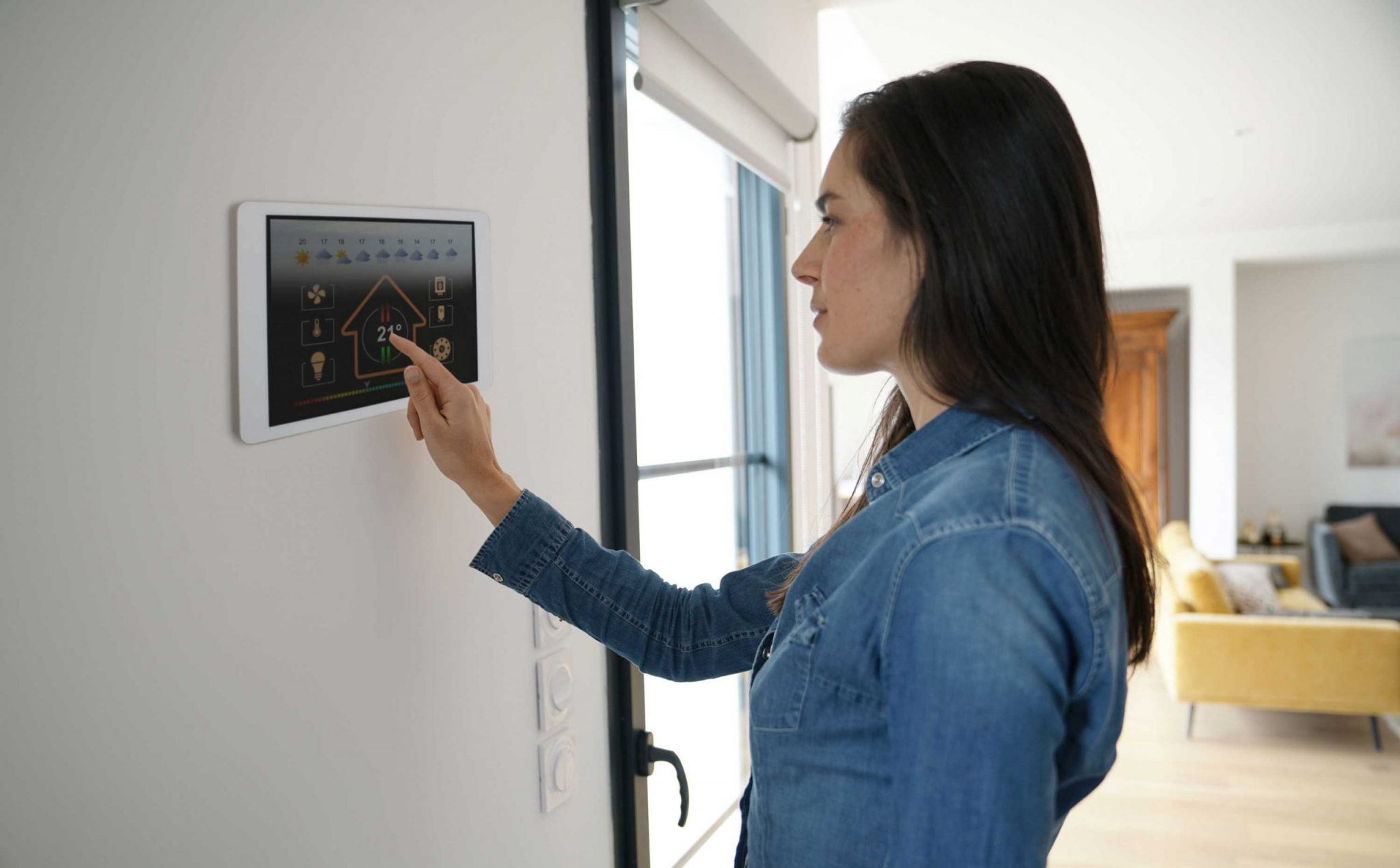Table of Contents

For the great majority of us, keeping our houses and offices at a pleasant temperature is an ongoing battle. There is nothing more annoying than having to manually adjust the thermostat in the morning because it’s too cold, only to have to do it again in the evening because it’s too hot.
Is there a method to reduce the number of times you have to manually adjust the indoor temperature? If your thermostat has Wi-Fi connectivity, then yes.
What is a smart thermostat?
The smart thermostat is designed to provide homeowners greater control over their home’s heating and cooling. And thanks to the device’s superior learning, you will no longer need to remember to adjust the temperature before leaving for work.
Additionally, smart thermostats contribute to the expansion of the smart home industry. These linked gadgets may include door locks, interior and outdoor security cameras, coffee machines, lighting, and speakers that can respond to any query.
Considering everything, it is totally feasible for the following to occur: You arrive home from work, park your car, and as you approach the front door, it automatically unlocks while the lights switch on and the thermostat adjusts to a pleasant degree.
Smart Thermostats and Programmable Thermostats
A smart thermostat performs many of the same functions as a programmed thermostat, but in a far more sophisticated manner. A programmable thermostat allows you to establish temperature limitations for certain time periods.
You may, for instance, design it to be a specific temperature during the day, another temperature in the evening, and maybe a third temperature while you sleep. You may also establish an away mode if you travel out of town.
A smart thermostat is also programmable, but it can be controlled from anywhere with an Internet connection. This provides flexibility and compensates for human mistake. Using a smart thermostat, you can alter the temperature remotely if you forget to adjust the temperature before leaving on vacation. Without a programmable thermostat, you would be stuck with the present temperature, resulting in a higher energy cost.
A smart thermostat provides extra functions that simplify your life. However, if you are careful about setting and monitoring the thermostat and you are not away for an extended period of time, you may not notice a significant difference in energy consumption between a smart system and a programmable system.
ADVANTAGES OF A SMART THERMOSTAT
Smart home devices such as smart speakers and lighting systems are increasing in popularity, and smart thermostats may help you save money and the environment. Here are the most compelling arguments for installing a smart thermostat in your home:
Adjust the temperature anywhere and at any time.
The remote control capabilities of a smart thermostat is one of its primary advantages over a normal programmed thermostat, allowing you to regulate the heat or air conditioners from your mobile phone, tablet, and even smart speaker—even from outside your house.
As long as you have a WiFi connection, you may regulate the temperature of your house using your mobile device from anywhere. Therefore, if you return home earlier or later than normal, or if the weather suddenly changes while you’re away, you can be certain that your home will be at the ideal temperature without wasting electricity.
Allow your thermostat to do the work.
Some intelligent thermostats are capable of learning your heating and cooling preferences as well as your daily routine and adjusting themselves automatically.
Some feature room sensors that can monitor the temperature in a particular room or region of the house and heat or cool it based on the current temperature, so as to minimize hot or cold spots. Geofencing-enabled thermostats may also detect when people arrive or exit the home and switch the device on or off accordingly.
Look stylish.
Many smart thermostats offer sleek, contemporary designs that help them blend in with your home’s decor, making them an attractive alternative to bulky conventional thermostats. Explore various smart thermostat types and models on our Pinterest page.
Save money on your energy bill.
Energy savings is one of the main advantages of having a smart thermostat. The average home spends more than $2,000 a year on energy expenditures, with heating and cooling accounting for over half. By heating and cooling your house more efficiently with a wireless smart thermostat, you may save considerable amounts of energy – up to $145 each year.
Save the environment!
Improving the energy efficiency of your home’s heating and cooling system not only saves you money, but also protects the environment by limiting the release of toxic fossil fuels. You can assist in reducing air pollution, enhancing air quality, and protecting our world from climate change!
If you are amazed by what a wireless smart thermostat can achieve, you may like to understand its inner workings. This thermostat has three fundamental components. One component is directly connected to your HVAC system. In turn, this component links to the thermostat control.
Lastly, there is the smart app, which you download to the device you intend to use, such as your phone, computer, or tablet.
You can operate a smart thermostat with an Internet connection from nearly anywhere, including your office, automobile, or even another nation.







